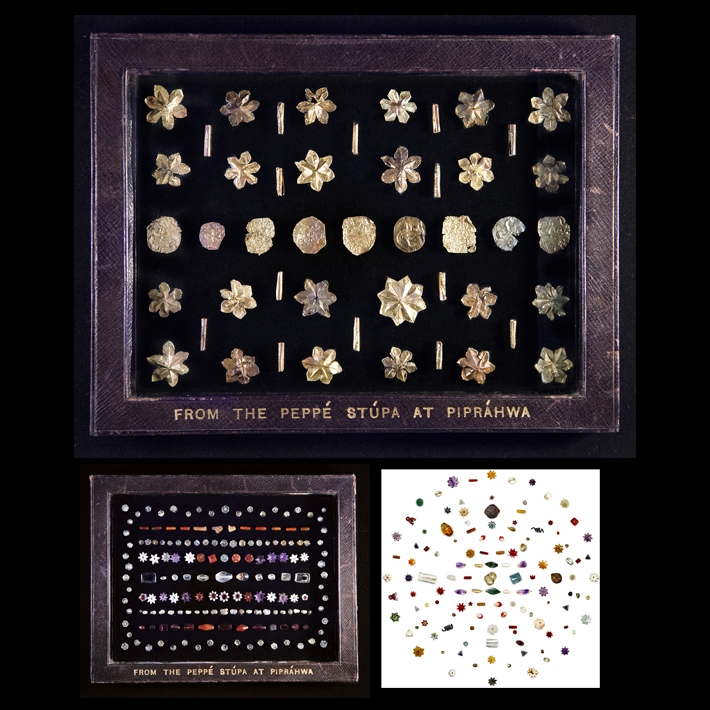54.Śarīra from the Piprahwa stūpa

- ca. 240–200 BCE
- Mahācaitya, Piprahwa, Siddharthnagar district, Uttar Pradesh
- Private collection
Before his death, the Buddha instructed his followers to collect and enshrine his cremation remains in stūpas, "like those of kings," beginning the cult of relic worship in Buddhism. The relics gathered from the ash, described as "like jasmine buds, washed pearls, and particles of gold" are understood to be magically formed out of the fire. In 1898 the precious objects seen here were excavated from the largest reliquary deposit ever recorded, by the English estate manager and engineer William Claxton Peppé (1852-1936). An inscription on one of the reliquaries named the corporeal remains as those of the Buddha himself-the first such discovery in India. The bone relics were presented in 1899 to King Rama V of Thailand, then the only surviving Buddhist monarch. The bulk of the offerings were sent to the Indian Museum in Kolkata, where they remain today.

 Previous
Previous